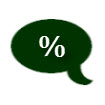 Shmuel Shayowitz (NMLS#19871) is President and Chief Lending Officer at Approved Funding, a privately held local mortgage banker and direct lender. Shmuel has over two decades of industry experience, including licenses and certifications as a certified mortgage underwriter, residential review appraiser, licensed real estate agent, and direct FHA specialized underwriter. Shmuel provides a uniquely holistic approach to comprehensive real estate and financial matters that goes well beyond any single transaction. Shmuel is an award-winning financier recognized for maximizing the short-term and long-term objectives of his client. As a contributing writer to many local and regional newspapers and publications, his insights have been featured in the media for many topics, including mortgages, personal finance, appraisals, and real estate trends.
Shmuel Shayowitz (NMLS#19871) is President and Chief Lending Officer at Approved Funding, a privately held local mortgage banker and direct lender. Shmuel has over two decades of industry experience, including licenses and certifications as a certified mortgage underwriter, residential review appraiser, licensed real estate agent, and direct FHA specialized underwriter. Shmuel provides a uniquely holistic approach to comprehensive real estate and financial matters that goes well beyond any single transaction. Shmuel is an award-winning financier recognized for maximizing the short-term and long-term objectives of his client. As a contributing writer to many local and regional newspapers and publications, his insights have been featured in the media for many topics, including mortgages, personal finance, appraisals, and real estate trends.
A decade ago, when home values were soaring and real estate was booming, many homeowners took advantage by taking cash out from the equity in their home. Typically, the loan was structured as a Home Equity Line of Credit (aka “HELOC,”) which functions very much like a typical consumer credit card. Specifically, a homeowner will pay minimum payments on only the loan portion that is being borrowed, and would not necessarily be obligated to pay any principal back. Additionally, the interest rates on these HELOC’s were extremely aggressive, often with very low teaser rates, and the payment was further discounted due to the interest-only features.
In fact, many banks ‘threw in’ a free HELOC to customers who didn’t need, or didn’t ask for them. More often than not, if someone applied for a first mortgage, whether it was to purchase or refinance their home, the bank pre-approved them for a no obligation line of credit without any additional cost or fees. Their hope was that if you give the consumer the ‘access’ to these lines of credits, one day in a pinch, or when in need, they would easily draw on these credit lines and the bank would have another loan ‘on their books.’ The best part to the bank was that they actually had real estate as collateral which was more favorable to them than any type of consumer-direct loan that they could offer.
Most HELOC’s have a 10-year draw period during which borrowers may use the money as needed, paying back all or none of the principal on a monthly basis. At the end of the 10-year draw period, the line of credit is no longer accessible, and the outstanding balance then converts to the repayment term, where both principal and interest fixed installment payments are made, typically over a 10 or 20-year period. These payments, when reset, could increase a borrower’s monthly payment by $550-$750 a month for loan balances near $100,000.
The current news on Home Equity loans is the recent Federal Reserve rate increase. When the Fed raises rates, it has a direct impact on the Prime Rate. Right now, that “Prime Rate,” which most HELOC’s are tied, is currently 3.75%. This is up 50 basis points from just a few short months ago. The Federal Reserve has already made one rate increase this year, and all eyes are on them to see their next move. What most people fail to realize and remember is that despite the record low prime rates, over the past 30 years prime has been as high as 22%, and has averaged 11% over this time period. What goes down must come up, and we might be on the brink of that happening shortly.
While there is considerable uncertainty about how much inflation will pick up due to both higher energy prices and the ultimate economic impact of Trump’s spending policies. If Trump gets the tax cuts and spending increases he wants, then rates might move up faster in anticipation of higher inflation, which will maintain the current Fed projections for rate hikes. It will probably increase short-term rates by 0.25% two more times in 2017, first at its June 14 meeting and next on either September 20 or December 13 session.
Even if one can afford the increase in HELOC payments, it does not mean there aren’t financial or tax benefits to contemplate. There are many options for people who have HELOC’s that are in repayment, or about to be in repayment. It’s easy to absorb the small increase in payments, and assume you have no better choice. With careful analysis of your entire financial situation, a qualified mortgage banker can sensibly guide you with the most cost beneficial and financially responsible loan option that you can get.
To learn more about Shmuel Shayowitz, click here or complete this form to be connected with Shmuel:


















